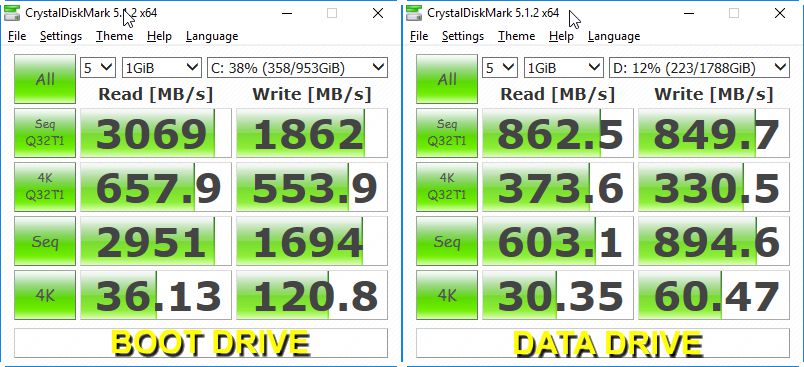- Oct 31, 2004
- 718
- 87
- 91
So my BIL bought a Gigabyte Aorus Gaming 7 motherboard ($400!!) because it advertised 3X M.2 RAID. His plan was to buy 3 512gb Samsung 960 Pro nvme sticks and RAID0 them as a boot drive. I have something similar working great on my own Gigabyte Z170X Gaming 5 motherboard (using 2x Plextor drives).
We assembled the system, and everything else, at least, worked great.
Reading the fine print, the system is "Optane-ready" which appears to mean, if you aren't using Optane, or shell out extra money for the currently non-existent VROC key, no bootable RAID0 for you. Worse, the third M.2 slot is not recognized, and I don't think this is because the motherboard is faulty, since the manual mentions the VROC Upgrade Key in association with that specific slot.
After spending hours shuffling drives around, trying various BIOS settings to varying (but very disappointing) results, we are left, in best case, with only TWO usable M.2 slots, and while you can create a RAID0 array with non-Optane drives without the VROC key, you CANNOT boot from that RAID array - Windows 10 1607 install will not recognize it.
So the scam is this: You already paid a premium for a motherboard that advertises 3 usable, RAID-able M.2 slots, and says nothing about restricted to Optane-only drives or requiring a VROC key to actually use the feature. It certainly says nothing about not being able to boot from a RAID0 array without the VROC key or Intel-branded SSDs. In my mind, this is worse than false-advertisement.
Obviously, some of the problems arise from rushing these boards out two months early, but there is no excuse for Intel's greedy nonsense.
We assembled the system, and everything else, at least, worked great.
Reading the fine print, the system is "Optane-ready" which appears to mean, if you aren't using Optane, or shell out extra money for the currently non-existent VROC key, no bootable RAID0 for you. Worse, the third M.2 slot is not recognized, and I don't think this is because the motherboard is faulty, since the manual mentions the VROC Upgrade Key in association with that specific slot.
After spending hours shuffling drives around, trying various BIOS settings to varying (but very disappointing) results, we are left, in best case, with only TWO usable M.2 slots, and while you can create a RAID0 array with non-Optane drives without the VROC key, you CANNOT boot from that RAID array - Windows 10 1607 install will not recognize it.
So the scam is this: You already paid a premium for a motherboard that advertises 3 usable, RAID-able M.2 slots, and says nothing about restricted to Optane-only drives or requiring a VROC key to actually use the feature. It certainly says nothing about not being able to boot from a RAID0 array without the VROC key or Intel-branded SSDs. In my mind, this is worse than false-advertisement.
Obviously, some of the problems arise from rushing these boards out two months early, but there is no excuse for Intel's greedy nonsense.




